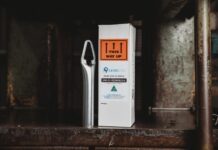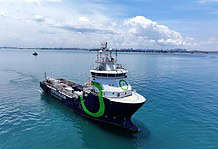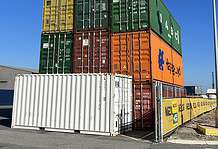WHILE 68pc of global nickel is still used for the production of stainless steel, and only 3pc for battery metals, an announcement by the Chinese government may have changed the fortune of the metal, along with the future of the automotive industry forever.
In 2018, China sent ripples throughout the car manufacturing and mining worlds when it announced its New Energy Vehicle (NEV) deal.
The deal set a quota for the number of zero-emissions vehicles that carmakers must sell, with companies each receiving a certain number of credits, depending on certain characteristics of the vehicles.
From 2019, major Chinese manufacturers would be punished unless they met quotas for zero and low-emission cars, or bought credits from companies that did not exceed their quotas.
The decision was made in order to clean up the air, reduce reliance on imported oil products, and to develop its home-grown electric car industry.
The global reach of China’s NEV deal was instantly felt, with General Motors and Ford both announcing their own major electric vehicle initiatives within 48 hours of China’s.
According to the March 2019 Resources and Energy Quarterly, nickel demand is expected to rise steadily over the outlook period, growing from 2.3mt in 2018 to 2.8mt by 2024.
And it said that while stainless steel would be the most dominant use for nickel until 2022, “over the long term, demand use is likely to evolve”.
“Electric vehicle production is projected to become a more significant source of demand by 2022, dominating growth in nickel demand beyond that year.
“This reflects the impact of both falling prices of electric vehicles and the growing suite of climate change-related incentives and penalties around the world, which are likely to propel global electric vehicle uptake.”
The electric vehicle
In 2018, there was a 62pc rise in electric vehicle sales, boosting the number worldwide to four million, and most of those sales have been made in China, which sold 1,255,000 EVs in 2018, according to the World Economic Forum.
Nickel is used in battery cathodes to enable greater energy storage, which then translates into a greater range for electric vehicle travel.
This has made high-quality nickel mines, especially those which produce cobalt as a by-product, once again become an asset to the world’s biggest companies.
The EV revolution is tipped to be in full swing by 2030, and the future of nickel would seem to still be reliant on the Chinese industrial mega-machine and its ability or failure to steer the global car industry away from the mass production of combustion engines.
Where over the years the electric vehicle has hit stumbling blocks and stifling funding problems, China, typically, has not been as fickle as its Western counterparts when it comes to long term economic and environmental goals, especially in the international arena.
This can be understood clearly through its interest in battery metal mining, where it has set up state-owned mining strongholds in places like the Democratic Republic of Congo and Chile, and will often run at a loss for years at a time.
Its well-articulated metals strategy has seen it secure footholds in many of the world’s hardest and most complicated places to mine – places that, somewhat ironically, contain the rarest and most necessary metals for global tech and electric vehicles.
China’s consistency in these areas may prove to be good news for Australian nickel miners, several of which are ramping up to resume or increase production.
BHP has taken its Nickel West mine off the market, and Quantum Minerals has flagged the possibility of restarting its troubled Ravensthorpe nickel mine.
The Resources and Energy Quarterly predicted that Australia’s total nickel export earnings would grow from $3.2b in 2018-19 to $4.6b by 2023-24.
Nickel West
BHP’s Nickel West mine had been on the market since 2015 and the company had made two failed attempts at selling the mine.
On May 13, chief executive Andrew Mackenzie told a Barcelona mining conference that the company would retain the business in its portfolio because it offered “high-return potential as a future growth option, linked to the expected growth in battery markets and the relative scarcity of quality nickel sulphide supply”.
Nickel West announced that a wave of developments would be carried out in order to keep it operational till 2040, and the company has commenced construction on the purpose-built upgrade to the Kwinana nickel refinery that would make it the world’s biggest nickel sulphate plant.
BHP said would help it begin the “transition to become a global supplier to the battery materials market”.
Stage 1 of the plant was expected to produce 100ktpa of nickel sulphate, with first production expected by the end of FY19.
The company said that it was exploring the possibility of a Stage 2, 200kt nickel sulphate facility, and was testing a cobalt sulphate circuit plant at the refinery.
Ravensthorpe
Canadian-owned First Quantum Minerals has announced it would potentially resume mining at the Ravensthorpe mine if nickel prices continued to rise.
BHP spent $2.1b to build the mine but, due to plummeting nickel prices, closed it in 2009 just months after opening it.
Ravensthorpe was bought by First Quantum in 2009 for $340m, and the company reached commercial production in 2011, only to place it on care and maintenance in 2017, after persistently low nickel prices forced it again out of production.
Estimated restart costs were expected to be around US$10m, and the company said that preparation of the Shoemaker Levy deposit is underway.
“A sustained rise in the nickel price would initiate plans that have been developed for employee recruitment, contract mining arrangements, camp reinstatement as well as enhancements to identified process circuit opportunities,” it said.
International outlook
Large-scale growth in the global refined output of nickel was expected to boost global production from 2.2mt in 2018 to 2.9mt in 2024.
However, this could be impacted by a number of problems associated with geological and capital constraints, one being the relative scarcity of nickel sulphide deposits.
With an increasing number of nickel miners turning from sulphide deposits to lateritic ore, which is more complex to extract and hence more expensive, nickel miners would need to develop more efficient technologies, or increased recycling capabilities, or both.
Indonesia and the Philippines continued to increase their output through 2018, and are expected to increase through 2019.
South America’s production looked likely to grow, as did Russia – Nornickel announced plans to expand output from its Artic deposits and to upgrade the Talnak concentrator.







































